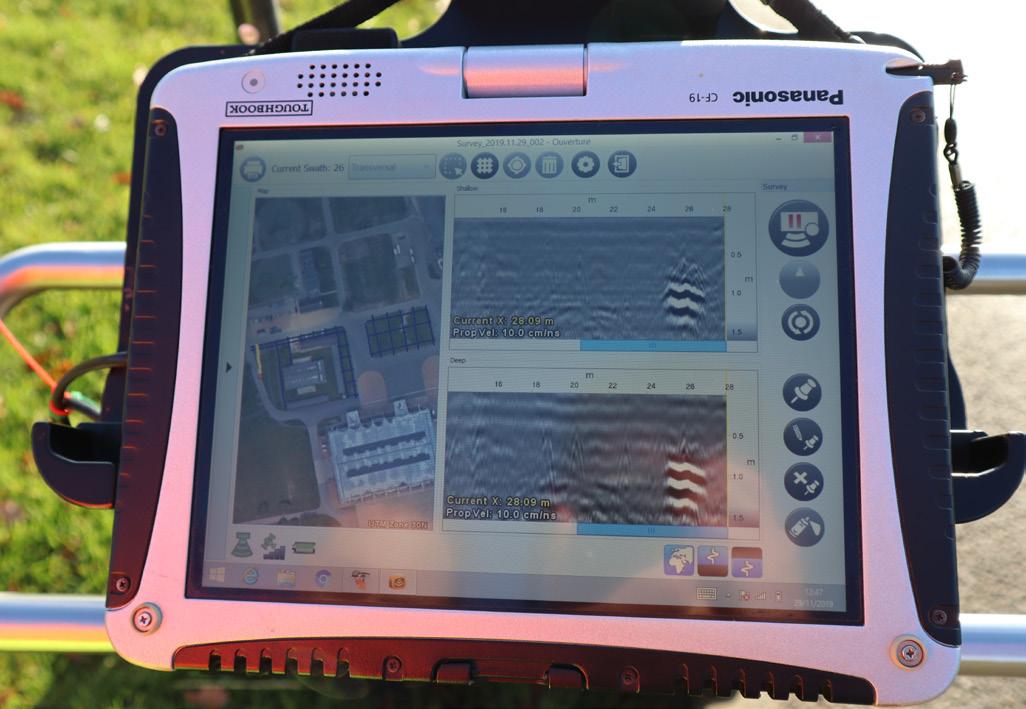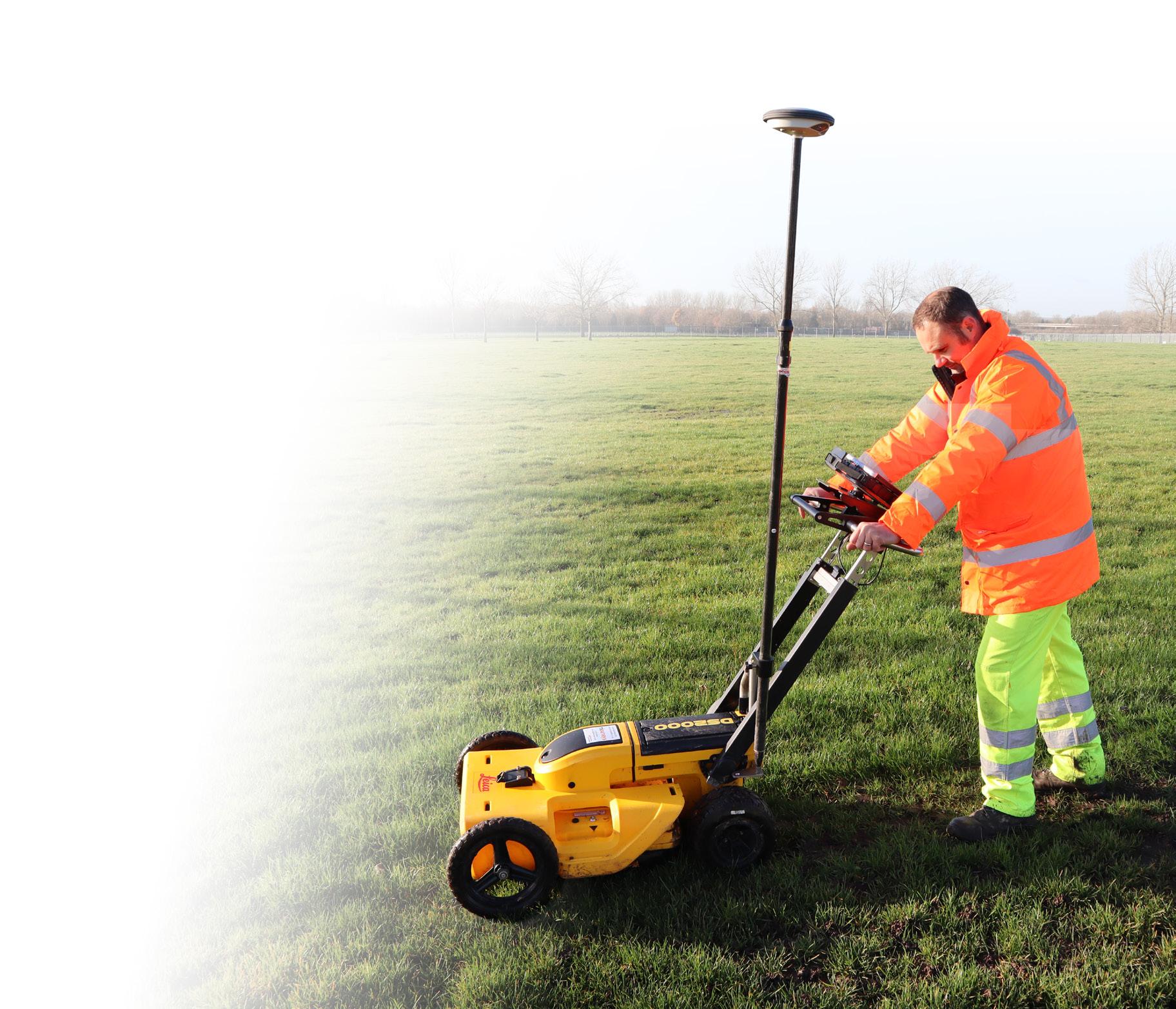
9 minute read
Plantworx 2021 Launch
Dates and venue announced for Plantworx 2021
The Construction Equipment Association (CEA) has announced the venue and dates for the next Plantworx trade show. The 5th biennial construction machinery exhibition will be held on 15-17 June 2021, at the East of England Arena and Events Centre, Peterborough.
Advertisement
The CEA took the decision to host the Plantworx show, once again at the East of England venue, following positive feedback from exhibitors and visitors who attended the 2019 event, which was deemed a resounding success.
The permanent exhibition facilities offered by the East of England Arena provided the perfect platform for exhibitors to showcase their products, equipment and services - introducing the latest plant and technology to the UK construction industry.
Visitors also applauded the Plantworx show’s new home, praising the ‘all weather’ venue as a ‘definite winner’, with its permanent walkways, good communication signals and wifi facilities – which allowed visitors to ‘do business – while doing business’!
The 2021 event is predicted to attract over 450 exhibitors from the world’s leading machine manufacturers, suppliers and service providers. Over the three-day event visitors can expect to see the very latest in technological advancements and innovations which will impact on the future of construction.
The show, which will be the ‘largest working’ event in 2021, is planning a comprehensive demonstration programme where exhibitors can put their machines through their paces in ‘real-site’ conditions. CEA, chief executive Rob Oliver said, “Plantworx 2021 promises to be the best yet. At an established exhibition venue, great support from our loyal exhibitors, and a targeted visitor programme, we are confident of delivering, once again, a memorable and valuable experience.”
Mr Oliver continued, “Plantworx isn’t about three-days in June next year. This year, the show is teaming up with the CEA for an awards evening on 11th June and planning a technology conference and showcase event at the Manufacturing Technology Centre, Coventry in November. It’s all part of our commitment to providing a rolling programme for the audience of construction professionals to receive the information and inspiration to grow their business.” Simon Frere-Cook Plantworx event director said, “Planning for Plantworx 2021 is now well underway as we build on the successes of 2019. With so much importance being attached to the working demonstrations we have undertaken an extensive survey of the grounds at the East of England Arena, so that we can spread the demonstration plots and thus improve the footfall throughout the site. During the winter we have also been improving the website and streamlining our procedures so that all will be ready for when stand sales start after Easter.”
The 2021 site plan is being finalised following the results of the survey and stand sales begin following Easter on April 21st, 2020.
Plantworx sales manager, Angela Spink is anticipating a high demand for stands following the site plan release date! She said, “Confirmation that the show will return to the East of England Arena will be welcome news to previous exhibitors following the encouraging feedback from 2019. We are also very confident that new and old exhibitors will join us in 2021.”
Mrs Spink added, “The comprehensive digital site survey has been invaluable in identifying new site opportunities for demonstration plots and a new and interesting layout. I am very much looking forward to getting Plantworx 2021 underway.” ■
For further information contact angela.spink@plantworx.co.uk Visit www.plantworx.co.uk
Simon Frere-Cook Plantworx event director and Stuart Favill Plantworx site manager and the MK Surveys team ‘going underground’ for Plantworx.

Going Under Ground!
Plantworx reveals what’s underground for its 2021 show –Peter Haddock reports for Construction Worx
Even though the weather at last year’s Plantworx show was challenging thousands of visitors made the pilgrimage to the event which proved to be a great success. This was thanks in part to its move to the East of England Showground, with its permanent walkways and a muchimproved infrastructure for visitors.
But for a few exhibitors, it was this very infrastructure which caused a few issues, as demonstration equipment buckets ruptured water pipes and unearthed cables. But according to site records, these utilities shouldn’t have been where they were digging.
It might have been fun for the ducks when a hole became a pond, thanks to a water main strike, but it certainly wasn’t for the exhibitor. Although these incidents didn’t cause any major problems for the Plantworx team, headed by event director, Simon Frere-Cook MBE, they were enough to put a very different plan in motion to ensure they never happened again.
This involved the commissioning of a ‘whole site’ survey with MK Surveys, who used Leica Geosystems ground penetrating radar and cable detection surveying equipment, to reveal just what was underground and where. The project itself took a team of three surveyors over two weeks to complete, before all the information was then put into a 2D and 3D model.
Talking to Simon at the showground, he explained why his team were ‘going underground’ and how the survey was going to allow them to change the show in 2021.
Simon explained, “When we made the move to East of England showground, the first thing we needed to do was determine how we could put on the type of Plantworx show that visitors expect. The main part of this, of course, involves seeing plant and equipment in action, in our dig zones. In order to create that live dig area experience that everyone enjoys, we looked at the site plans and determined the best location for these activities to take place.
With the plans showing where the underground utilities were on the site, we decided to locate the dig zone into one area that was free from any of these pipes or cables. Of course what we discovered at the show was the site plans were not up to date or accurate. We also recognised that concentrating all of the live demos into one area was not ideal for the way in which people visited the show.”
Simon continued, “This was because the flow of visitors tended to focus on these areas. So, following a review of the 2019 show, we wanted to change this and of course avoid any potential incidents in the future, by investigating what was actually underground and where. In doing this we knew we could use the information to reshape the show, by opening up areas for demonstrations and distributing them more widely around the showground. This in turn would help us to improve
In order to build a factual and accurate underground model, the MK Surveys team brought a suite of Leica Geosystems surveying equipment onsite.

the experience for visitors and exhibitors alike.”
In order to build a factual and accurate underground model, the MK Surveys team brought a suite of Leica Geosystems surveying equipment onsite, gathering information to be used to complete a comprehensive survey of the whole showground. In December 2019, I joined the MK Surveys team, headed by Gordon Livie onsite, as they were updating Simon and his site manager Stuart Favill on the project’s progress. As part of my visit, I wanted to find out what was involved in the survey, how the equipment actually worked and what was involved with creating the final model.
When I got to site, Gordon and his team were busy working with a range of Leica Geosystems equipment in a grid formation on a grassed area that makes up part of the 250 acres of outside space at the showground.
Talking to Gordon, he explained what the team had to do to create the survey and how the different pieces of kit were being used on site. Gordon said, “Before we even got to site with our equipment, we had to do a lot of research to collate and study the existing plans of the site, which would give us a guide of what to expect. This process included collecting plans from the East of England showground and the statutory undertakers”.
“On looking at the plans, it became clear that over time, they had been altered with various degrees of accuracy, from pencilled in lines to more detailed drawings. But as we got onto site surveying, we soon learnt that although these documents showed some of the utilities, there were many more hidden below ground that hadn’t made it onto the plans.”
“Of course, the problem comes with this type of site when you have both historic utilities like metal pipework and then newer utilities like plastic pipes. This is because the standard metal detection systems you can use, don’t work with plastic utilities. In order to ensure we captured everything accurately, we had to combine the use of the Leica Ultra Electromagnetic Locator metal detection system, its smaller Leica DS2000 Ground Penetrating Radar and its larger cousin, the Leica Stream C Ground Penetrating Radar.”
“In order to create the site model, we used all of the detection equipment to detect the underground utilities first. Then all location equipment was used to map the positions of the detected utilities. All the ground penetrating radar (GPR) data was then collected using GNSS tracking, so the positions of any utilities were recorded in the exact location as we carried out the survey.” “For anyone not familiar with how GPR equipment works, basically the technology uses a transmitter and antennas which emit electromagnetic energy into the ground. When the energy encounters a buried object or a boundary between materials the receiving antenna is able to process this and create a model by recording the variations in the return signal. So, if a plastic pipe or other utility is in the ground, this will show up on the readings. This means we are able to collect accurate depth, and size information of the utilities, that is then put together by our software modelling experts. This, in turn, allows them to build an accurate model of what is underground, creating a 2D and 3D version of this.”
When I asked Gordon about what the team discovered after the survey was finished, he has some quite startling revelations, with some utilities up to 10 metres in the “wrong” location. The large fuel main which crosses the site has also now been properly mapped as the location of this was a very grey area.
With Gordon and the team already booked up for an exhibitor plot at Plantworx 2021, he assured me that any areas proposed to be excavated would be cleared before any ground is broken. After all, with 18 months passing between the survey and the event, there is no telling if someone had installed a new utility that was not picked up this time. I know one lot of visitors that won’t be happy though in 2021 and that is the ducks. Unless anyone has decided to make a 3D pond for their stand of course. ■
Plantworx 2021 will take place from 15th – 17th June at The East of England Arena and Showground. Stand sales begin on 21st April 2020. For further details contact Plantworx sales manager Angela Spink at angela.spink@plantworx.co.uk

GPR equipment technology uses a transmitter and antennas which emit electromagnetic energy into the ground.










